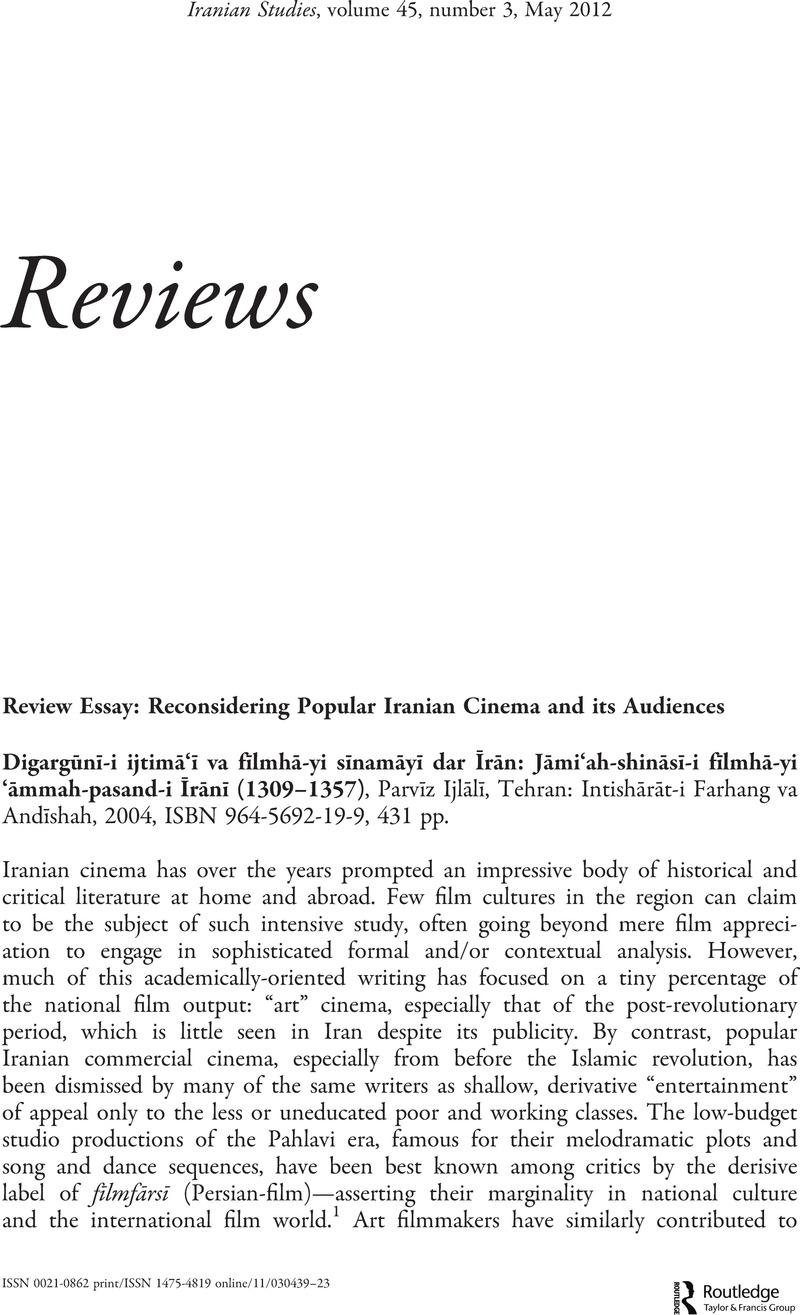No CrossRef data available.
Article contents
Review Essay: Reconsidering Popular Iranian Cinema and its Audiences
Review products
Published online by Cambridge University Press: 01 January 2022
Abstract

- Type
- Reviews
- Information
- Copyright
- Copyright © Pedram Partovi 2012
References
1 Most commentators have credited the French-trained filmmaker and critic Hūshang Kāvūsī with first popularizing the term fīlmfārsī during the mid-to-late 1950s in unsparing reviews of the work of the budding domestic industry. In a recent interview, Kāvūsī has explained his use of the term to highlight two things he considered to be lacking in many Iranian films of the time. Like many compound words, it took on a third meaning independent of or unrelated to the words composing it. Thus, while fīlmfārsī may have been of film and in the Persian language, in his opinion it was neither cinema nor part of the Persian literary-artistic tradition (“Fīlmfārsī ham fīlm būd va ham Fārsī, ammā dar ‘ayn-i hāl nah fīlm bud va nah Fārsī”; quoted in “Dūrbīn barā-yi ānhā vasīlah-i ma‘āsh būd: Guft va gū ba Hūshang Kāvūsī,” in Fīlmfārsī chīst?, ed. Husayn Mu‘azzizī Niyā [Tehran, 1999], 8).
2 Umīd has published a similar volume on the 1980s, Tārīkh-i sīnamā-yi īrān: 1358–1369 (Tehran, 2004).
3 For example, even in the early 1970s Vanak Square was home to a drive-in theater, which has been a suburban or exurban phenomenon wherever it has appeared. Today it is well within Tehran city limits.
4 According to the author's figures, the share of north Tehran even declined between 1966 and 1976, from 12 percent to 10.8 percent (p. 133).
5 Matthee, Rudi, “Prostitutes, Courtesans, and Dancing Girls: Women Entertainers in Safavid Iran,” Iran and Beyond: Essays in Honor of Nikki R. Keddie, ed. Matthee, Rudi and Baron, Beth (Costa Mesa, CA, 2000), 121–50.Google Scholar
6 Naficy, Hamid, The Making of Exile Cultures: Iranian Television in Los Angeles (Minneapolis, 1993), 185.Google Scholar
7 See “Mushkil īn ast: Man Īraj Qādirī hastam,” Sharq, 27 December 2004; “Bāzgasht-i kāmil bih sīnamā-yi dahahhā-yi 30 va 40: Guft va gū bā Sa‘īd ‘Aqīqī, fīlmnāmahnivīs va muhaqqiq,” Sharq, 20 September 2010.




